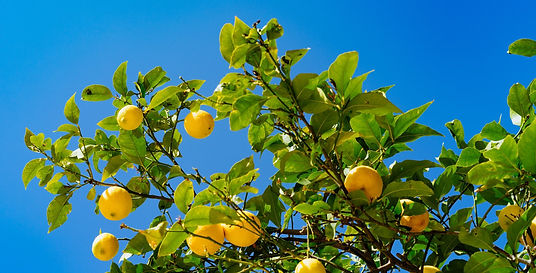
How To Grow A Lemon Tree
Produced By Bush Keeper's

Growing a Lemon Tree: A Guide to Citrus Success
Lemon trees are a wonderful addition to any garden or backyard. Not only do they provide an abundant supply of fresh, tangy fruit, but they also add beauty and fragrance to the surrounding area. If you're interested in growing your own lemon tree, this guide will provide you with the essential steps and tips for a successful citrus-growing experience.
1. Choose the Right Variety: There are various lemon tree varieties available, each with its own characteristics and requirements. The most popular lemon variety for home gardeners is the Eureka lemon, known for its juicy fruit and evergreen foliage. Other options include the Meyer lemon, which has sweeter fruit and smaller size, and the Lisbon lemon, which is slightly more cold-tolerant. Research the different varieties and select the one that best suits your climate and preferences.
2. Provide Adequate Sunlight: Lemon trees thrive in full sunlight, so choose a location in your garden that receives at least 6 to 8 hours of direct sunlight each day. If you live in a colder climate, consider planting your lemon tree in a container so you can move it indoors during the winter months to protect it from frost.
3. Prepare the Soil: Lemon trees prefer well-draining soil with a slightly acidic pH level between 5.5 and 6.5. If your soil is heavy or clay-like, amend it with organic matter, such as compost or well-rotted manure, to improve drainage. Additionally, consider performing a soil test to determine the nutrient content and adjust accordingly with organic fertilizers or amendments.
4. Planting the Tree: Dig a hole that is slightly wider and deeper than the root ball of the lemon tree. Gently remove the tree from its container, taking care not to damage the roots. Place the tree in the hole, making sure that the bud union (the swollen area where the tree was grafted onto the rootstock) is above the soil line. Backfill the hole with soil, firming it gently around the roots. Water the tree thoroughly after planting.
5. Watering: Lemon trees require regular watering, especially during the hot summer months. Water deeply, allowing the soil to dry out slightly between waterings. Avoid overwatering, as excessive moisture can lead to root rot. Consider using a drip irrigation system or a soaker hose to ensure consistent and efficient watering.
6. Fertilizing: Lemon trees benefit from regular fertilization to support healthy growth and fruit production. Apply a balanced citrus fertilizer according to the manufacturer's instructions during the growing season. Avoid fertilizing during the winter months when the tree is dormant.
7. Pruning and Maintenance: Prune your lemon tree to maintain a desired shape and promote airflow within the canopy. Remove any dead or damaged branches and thin out crowded areas to improve light penetration. Pruning is best done in late winter or early spring before new growth begins. Additionally, regularly monitor your tree for pests and diseases, such as citrus leaf miners or aphids, and take appropriate measures to control them.
8. Harvesting: Depending on the variety, lemons can take anywhere from four to twelve months to ripen. Look for lemons that have turned a bright yellow color and feel firm to the touch. Gently twist or cut the fruit from the tree, taking care not to damage the branch. Freshly harvested lemons can be stored at room temperature for several days or kept in the refrigerator for longer shelf life.
Growing your own lemon tree can be a rewarding and enjoyable experience. With proper care and attention to the tree's needs, you can enjoy a bountiful supply of delicious lemons right from your own backyard. So, roll up your sleeves, get your gardening tools ready, and start planting your very own lemon tree today!
